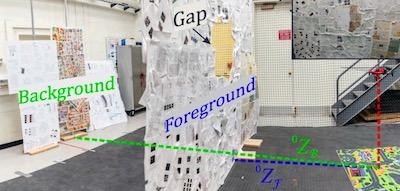Sat, Sep 15, 2018
University Of Maryland Scientists Working On Project GapFlyt
Researchers at the University of Maryland are teaching drones to employ techniques used by birds and insects to fly through narrow gaps at high speeds. The drone, a Bebop 2 drone with an NVIDIA Jetson TX2 GPU on board, has been able to fly through a small hole at about 6 feet per second with about an 85 percent success rate.

The program is called GapFlyt by the UM researchers. TechCrunch reports that the drone utilizes a monocular camera that allows the aircraft to develop a 3D model of a surface from a series of photographs. The drone can assess the size and depth of holes and find a safe path through the gap.
Spectrum IEEE reports that the drone captures a series of images and identifies similar features in each image. Features behind the gap will appear to move less than those that are closer, and the drone identifies where that difference is the greatest. Then, it flies through the gap.
A process called visual servoing provides feedback to control the motion. The drone flies around the target area, and adjusts its movement to be sure its position relative to the gap is consistent. The paper published by the UMD researchers equates the process to that of a bee looking for a gap through which it wishes to fly.
According to the researchers, they achieved a success rate of 85 percent "over 150 trials for different arbitrary shaped windows under a wide range of conditions which includes a window with a minimum tolerance of just 5 cm."
"We present a minimalist philosophy to mimic insect behaviour to solve complex problems with minimal sensing and active movement to simplify the problem in hand. This philosophy was used to develop a method to find an unknown gap and fly through it using only a monocular camera and onboard sensing," the paper says in its conclusion. "As a parting thought, IMU data can be coupled with the monocular camera to get a scale of the window and plan for aggressive maneuvers."
(Sources as cited. Image from University of Maryland)
More News
From 2023 (YouTube Version): Legacy of a Titan Robert (Bob) Anderson Hoover was a fighter pilot, test pilot, flight instructor, and air show superstar. More so, Bob Hoover was an i>[...]
Get The Latest in Aviation News NOW on Instagram Are you on Instagram yet? It's been around for a few years, quietly picking up traction mostly thanks to everybody's new obsession >[...]
Aero Linx: B-52H Stratofortress The B-52H Stratofortress is a long-range, heavy bomber that can perform a variety of missions. The bomber is capable of flying at high subsonic spee>[...]
Altimeter Setting The barometric pressure reading used to adjust a pressure altimeter for variations in existing atmospheric pressure or to the standard altimeter setting (29.92).>[...]
"Knowing that we play an active part in bettering people's lives is extremely rewarding. My team and I are very thankful for the opportunity to be here and to help in any way we ca>[...]
 Classic Aero-TV: Remembering Bob Hoover
Classic Aero-TV: Remembering Bob Hoover ANN FAQ: Follow Us On Instagram!
ANN FAQ: Follow Us On Instagram! ANN's Daily Aero-Linx (05.15.24)
ANN's Daily Aero-Linx (05.15.24) ANN's Daily Aero-Term (05.15.24):Altimeter Setting
ANN's Daily Aero-Term (05.15.24):Altimeter Setting Aero-News: Quote of the Day (05.16.24)
Aero-News: Quote of the Day (05.16.24)



